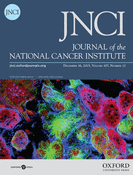
2015年9月21日讯 /生物谷BIOON/ –有数据表明,大约15%~20%的乳腺癌病人会受到癌症骨转移的折磨。近日在一项发表在国际学术期刊JNCI的最新研究中,研究人员发现了一个关键基因能够促进乳腺癌细胞向骨侵袭,并在骨形成新的肿瘤。
癌细胞骨转移是唯一一种能够被药物控制的转移类型,但仍然不可治愈。通常来说在发现转移之后再进行治疗已经太晚,早期研究表明用于治疗癌转移的药物也可用于癌转移的预防,因此早发现癌症骨转移风险对于癌症病人来说至关重要。在这项研究中,研究人员将研究重点放在对雌激素受体阳性乳腺癌细胞的分析上,这类细胞倾向于发生骨转移,同时也是乳腺癌的常见类型。他们发现一个叫做MAF的基因会触发癌细胞内一系列功能变化导致癌细胞转移发生。研究人员对超过900个原发性乳腺肿瘤样品进行了分析,发现MAF发生突变的肿瘤发生骨转移的风险是没有发生突变的肿瘤的14倍。
研究人员指出,这个基因可以准确预测乳腺癌骨转移的风险,研究该基因在乳腺癌病人中是否具有高表达以确定这种方法是否能够应用于临床将是下一步研究中非常重要的内容,这对于改善病人生命质量以及帮助临床医生进行乳腺癌骨转移的诊断治疗都有非常大的助益。
值得注意的是,这项研究得到了风投公司Ysios Capital和Vila Casas Foundation的资助,用以开发临床诊断治疗所需工具,并且该研究结果已经申请专利,目前正在进行临床验证阶段。(基因宝jiyinbao.com)

Enhanced MAF Oncogene Expression and Breast Cancer Bone Metastasis
Milica Pavlovic*, Anna Arnal-Estapé*, Federico Rojo, Anna Bellmunt, Maria Tarragona, Marc Guiu, Evarist Planet, Xabier Garcia-Albéniz, Mónica Morales, Jelena Urosevic, Sylwia Gawrzak, Ana Rovira, Aleix Prat, Lara Nonell, Ana Lluch, Jo?l Jean-Mairet, Robert Coleman, Joan Albanell and Roger R. Gomis
Background: There are currently no biomarkers for early breast cancer patient populations at risk of bone metastasis. Identification of mediators of bone metastasis could be of clinical interest.
Methods: A de novo unbiased screening approach based on selection of highly bone metastatic breast cancer cells in vivo was used to determine copy number aberrations (CNAs) associated with bone metastasis. The CNAs associated with bone metastasis were examined in independent primary breast cancer datasets with annotated clinical follow-up. The MAF gene encoded within the CNA associated with bone metastasis was subjected to gain and loss of function validation in breast cancer cells (MCF7, T47D, ZR-75, and 4T1), its downstream mechanism validated, and tested in clinical samples. A multivariable Cox cause-specific hazard model with competing events (death) was used to test the association between 16q23 or MAF and bone metastasis. All statistical tests were two-sided.
Results: 16q23 gain CNA encoding the transcription factor MAF mediates breast cancer bone metastasis through the control of PTHrP. 16q23 gain (hazard ratio (HR) for bone metastasis = 14.5, 95% confidence interval (CI) = 6.4 to 32.9, P < .001) as well as MAF overexpression (HR for bone metastasis = 2.5, 95% CI = 1.7 to 3.8, P < .001) in primary breast tumors were specifically associated with risk of metastasis to bone but not to other organs.
Conclusions: These results suggest that MAF is a mediator of breast cancer bone metastasis. 16q23 gain or MAF protein overexpression in tumors may help to select patients at risk of bone relapse.
 基因君官网
基因君官网